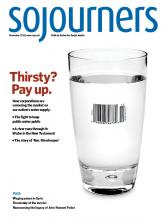THE ANACOSTIA RIVER is a river of contrasts. Often called “the nation’s forgotten river,” it flows for eight-and-a-half miles through some of the richest and poorest communities in and around D.C., through residential and industrial zones, through marshes and military installations. In fact, the federal government owns so much land in the watershed that when all those federal toilets flush during a heavy rain, they drain directly into the river.
The Anacostia River watershed is home to more than 800,000 people, 43 species of fish, and nearly 200 species of birds—including our nation’s symbol, the bald eagle, and the majestic great blue heron. Yet the trash in the river is so deep and wide at times that you’re just as likely to see a heron walking across a flotilla of trash rather than flying over the water.
As the Anacostia Riverkeeper—part of the Waterkeeper Alliance movement to protect local waterways—it was my job for three years to be the eyes, ears, and voice of its watershed. Of the nearly 200 waterkeepers worldwide, I was the only riverkeeper who was also a minister. I was called “Rev. Riverkeeper.”
The antiquated sewer system that pumps more than 2 billion gallons of raw sewage, mixed with polluted runoff, into the river each year is not just a shame, it’s a sin. African-American churches along the Anacostia used to baptize their members in the river. Nowadays, the river wouldn’t wash away anyone’s sins. My goal as Rev. Riverkeeper was an Anacostia that was not only “fishable” and “swimmable”—as required by the Clean Water Act—but also “baptizable.”
Read the Full Article
